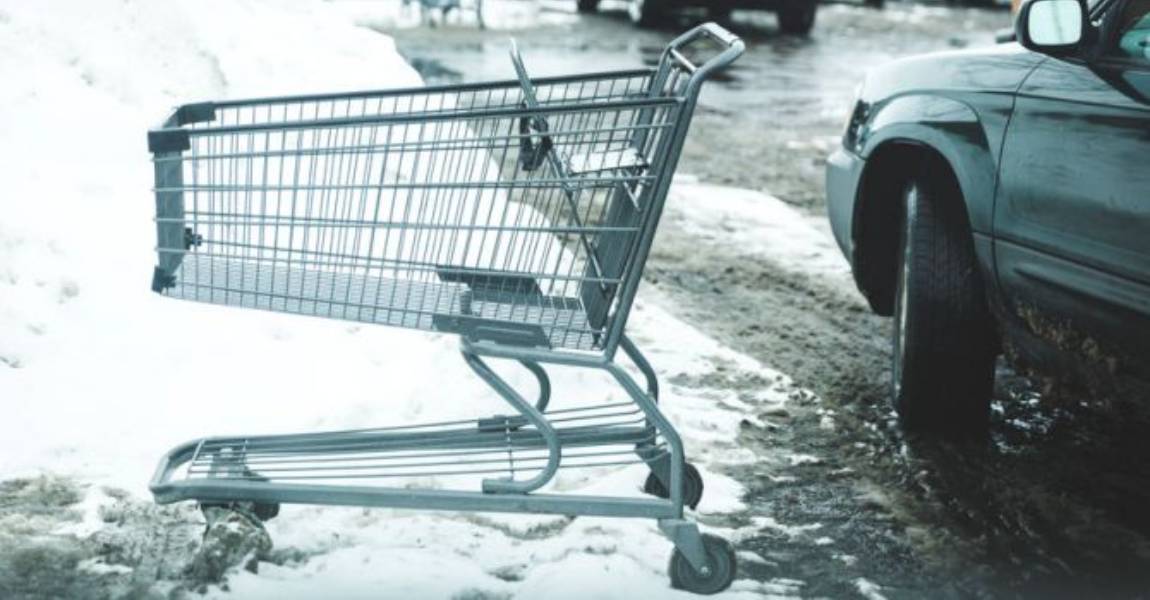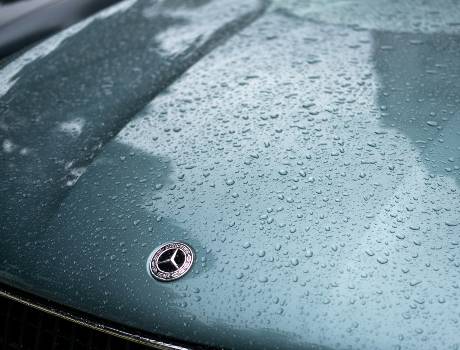Winter brings a magical blanket of snow, but it also brings unique challenges for car owners. From icy roads to snow-covered parking lots, the season presents numerous hazards that can result in unsightly dents and dings on your vehicle. Preventing Winter-Related Dents and Dings with proactive measures, you can safeguard your car from the winter elements and maintain its pristine condition. This guide explores practical strategies to prevent winter-related dents and dings while keeping your vehicle safe and roadworthy.
Also, read our guide 8 Reasons Why Winter is the Perfect Time for Paintless Dent Repair (PDR).

Table of Contents
Understanding Winter Hazards
Winter’s icy grip often creates perfect storm conditions for vehicle damage. Snow and ice accumulation can weigh down branches, leading to falling debris that might dent your car. Slippery conditions increase the chances of vehicles sliding into each other. Additionally, crowded parking lots during snowstorms make it challenging to avoid accidental dings. Recognizing these hazards is the first step toward preventing Winter-Related Dents and dings.
Parking Smarter in Winter
Parking decisions play a significant role in protecting your car. Opt for safe locations away from overhanging trees, as heavy snow or ice can cause branches to break. If outdoor parking is unavoidable, consider parking closer to building walls, which act as windbreaks. Avoid parking near snowplows or where snow is actively being piled, as snow-clearing equipment can inadvertently cause damage.
Using Protective Gear
Investing in protective gear can significantly reduce the risk of winter-related damage. Car covers designed for winter weather shield your vehicle from falling snow and ice. Magnetic door protectors provide an extra layer of defense against parking lot dings, while mud flaps and splash guards keep slush and road debris from causing scratches.
Safe Driving Practices in Snow and Ice
Adopting cautious driving habits is essential during winter. Keep a safe distance from other vehicles to minimize the chances of a collision. Equip your car with winter tires for better traction, and drive at reduced speeds on icy roads. Avoid sudden braking or sharp turns, as these can cause loss of control, leading to accidents and dents.
Preparing Your Vehicle for Winter
Prepping your car for the season goes a long way in preventing damage. Schedule regular maintenance to ensure everything from brakes to heating systems is in top shape. Check tire tread depth and pressure to handle slippery conditions. A coat of wax or sealant protects your car’s paint from harsh winter elements.
Cleaning Snow and Ice Safely
Removing snow and ice requires the right tools and techniques to avoid scratches. Use soft-bristled brushes and plastic scrapers instead of metal ones, which can damage your car’s surface. Start by clearing the roof to prevent snow from falling onto the hood or windshield. Never use hot water to melt ice, as the rapid temperature change can crack glass.
Avoiding Collisions and Dents in Parking Lots
Parking lots during the winter, especially during the holiday season, can be a hotbed for vehicle dents and dings. Snowbanks and ice mounds often take up significant portions of parking spaces, forcing vehicles closer together. Here are some key strategies to reduce the risk of parking lot damage:
- Choose Strategic Parking Spots: Park farther from store entrances where traffic is less dense. While this means walking a bit farther, it reduces the chances of a neighboring car opening its door into yours.
- Avoid Parking Near Snowbanks: Snowbanks often conceal curbs, posts, or even debris. Parking too close to these can cause unintentional scratches or dents.
- Be Mindful of Sliding Risks: In icy conditions, cars are more likely to slide while parking or backing out. Choose spots with level ground to minimize this risk.
Handling Heavy Snowfall and Ice Storms
Winter storms bring unique challenges, and heavy snowfall or ice buildup can cause significant vehicle damage. Take proactive measures to protect your car: How to Prevent Wintertime Ice Dings
- Clear Snow Safely: Before driving, ensure all snow is removed from your car, especially from the roof, hood, and windows. Falling chunks of snow while driving can obscure your visibility or hit another vehicle, causing damage.
- Monitor for Icicles: If you park near buildings or under structures, check for overhanging icicles that might fall and dent your car.
- Be Prepared for Freezing Rain: Freezing rain creates a hard shell of ice on your car’s surface. Use a de-icer spray to loosen the ice instead of forcefully scraping it, which can cause scratches.

Educating Drivers and Family Members
Prevention starts with awareness. Ensuring that everyone who drives your vehicle understands winter driving and parking best practices is crucial:
- Teach Caution in Icy Conditions: Emphasize the importance of slow speeds, gentle braking, and turning gradually to avoid skidding.
- Door-Opening Awareness: Teach family members to open car doors carefully in tight spaces, especially when icy conditions make handling doors tricky.
- Avoid Hasty Parking Decisions: Encourage mindfulness when choosing parking spots, avoiding crowded or poorly lit areas.
Emergency Winter Preparation
Winter emergencies can arise without warning, and being prepared helps mitigate risks:
- Carry a Winter Emergency Kit: Include essentials like a snow shovel, ice scraper, de-icer, flashlight, and extra blankets. These items can be invaluable when dealing with snow or ice buildup.
- Have Basic Repair Tools: Equip your car with tools for minor fixes, such as a tire repair kit or jumper cables.
- Know Roadside Assistance Options: Keep contact information for a reliable roadside assistance service handy in case of emergencies.
Winter-Proofing Your Home Parking Area
Protecting your car starts at home. Whether you have a garage or park in a driveway, take steps to ensure a safe environment:
- Install Snow Guards: If you park near your home, install snow guards on your roof to prevent snow or ice from sliding off and damaging your vehicle.
- Use Sand or Salt on Driveways: Spread sand or salt to provide traction and reduce the chances of sliding when entering or exiting your driveway.
- Ensure Adequate Lighting: Proper lighting makes it easier to see and avoid obstacles when parking in snowy or icy conditions.
Cars parked outdoors in winter conditions are 40% more likely to experience damage from falling snow, ice, or debris than vehicles parked in garages or covered spaces. (Source: AAA Auto Club)
Addressing Dents and Dings Promptly
Even with the best precautions, winter dents and dings can still happen. Addressing them promptly helps prevent further damage:
- Temporary Fixes: Use a hairdryer or warm water to pop out minor dents caused by cold weather. However, avoid applying excessive heat that could damage the paint.
- Professional Repairs: For deeper dents or scratches, consult a professional auto body shop. Denver paintless dent repair (PDR) is an excellent option for minor damage.
- Avoid DIY Repairs in Extreme Cold: The cold weather can make materials brittle, increasing the chances of causing additional damage during DIY fixes.

Using Paintless Dent Repair (PDR) to Prevent Winter-Related Dents and Dings
While Paintless Dent Repair (PDR) is traditionally used to fix existing dents, it also plays a proactive role in maintaining your car’s structural integrity during winter. By promptly addressing minor dings caused by icy conditions, hail, or falling debris, PDR prevents small dents from worsening due to freezing temperatures and expanding moisture. This non-invasive technique restores your vehicle’s surface without compromising the original paint, ensuring that your car remains well-protected against rust and corrosion. Utilizing PDR as part of your winter vehicle care routine not only preserves your car’s appearance but also saves you from costly repairs in the future.
Environmental Factors to Watch Out For
Winter conditions are harsh not just on your vehicle but also on the surrounding environment. Consider these additional factors:
- Road Salt Effects: Road salt can cause corrosion on your car’s body and undercarriage. Wash your car frequently during winter, focusing on the undercarriage.
- Snow-Blowing Machines: Avoid parking near areas where snow-blowing machines are active, as they can throw ice and debris toward vehicles.
- Weather Forecast Awareness: Keep an eye on the forecast, especially before storms. Knowing what to expect helps you plan better for parking and protection.
Approximately 70% of winter-related vehicle damage is caused by sliding on icy roads or in parking lots, with minor dents and dings being the most common type of damage reported. (Source: Insurance Institute for Highway Safety)
Summary and Final Tips Preventing Winter-Related Dents and Dings
Winter can be tough on your car, but with the right strategies, you can avoid most dents and dings. From choosing safe parking spots to investing in protective gear and adopting safer driving habits, small efforts go a long way in preserving your car’s condition. Regular maintenance and timely repairs ensure that even when winter’s worst happens, your car stays in excellent shape.
By taking these steps, you’ll not only save money on repairs but also enjoy peace of mind knowing your vehicle is well-protected throughout the winter season. Proactive care is the best defense against the challenges of winter weather—start implementing these tips today!
FAQs About Preventing Winter-Related Dents and Dings
1. What are the most common causes of winter-related dents and dings?
Winter dents and dings are often caused by icy roads, sliding vehicles, falling ice or tree branches, crowded parking lots, and improper snow removal techniques. These factors are amplified during heavy snowfall or freezing rain, making it crucial to take preventative measures.
2. How can I protect my car from falling snow or ice while parked outdoors?
To protect your car, park in areas without overhanging branches or structures that could drop snow or ice. Use a high-quality car cover designed for winter weather to shield your vehicle. If possible, park near walls or windbreaks to minimize exposure to falling debris.
3. What tools should I use to safely remove snow and ice without damaging my car?
Use soft-bristled snow brushes and plastic ice scrapers to clear snow and ice. Avoid using metal tools or forceful scraping, as these can scratch the paint. Additionally, de-icer sprays can help loosen ice without the need for excessive force.
4. How does parking location affect the likelihood of winter dents and dings?
Parking in safe, strategic locations can significantly reduce the risk of damage. Avoid parking near snowbanks, under trees, or in areas with active snow removal equipment. Opt for parking spots with level ground and ample space to reduce the chance of sliding or door dings.
5. Can protective accessories help prevent winter damage?
Yes, protective accessories such as car covers, magnetic door guards, and mud flaps can help prevent dents, scratches, and other damage caused by winter weather. Investing in these accessories provides an extra layer of defense against the elements.
6. What driving habits can help prevent accidents and dents during winter?
Drive cautiously in winter by reducing speed, maintaining a safe distance from other vehicles, and avoiding sudden braking or sharp turns. Equipping your vehicle with winter tires enhances traction and reduces the likelihood of sliding into obstacles.
7. How often should I wash my car during winter to prevent damage?
Wash your car regularly during winter, especially after driving on roads treated with salt or sand. Pay extra attention to cleaning the undercarriage to prevent rust and corrosion caused by salt buildup. Washing your car also removes grime that can scratch the surface if left unchecked.
Contact Us for Expert Tips on Preventing Winter-Related Dents and Dings
Contact us at Pro-Tech Auto Shield & Nano Coatings, we understand the challenges winter poses for vehicle owners. Whether you’re looking for advice, protective solutions, or professional services to keep your car safe during the cold season, we’re here to help!
📞 Call us today at (303) 423-2841 to speak with our experts about protecting your vehicle from winter-related dents and dings.
📍 Visit us at our location or schedule an appointment to explore our advanced nano coatings and other protective options tailored to winter conditions.
Let us help you keep your car looking its best, no matter how harsh the weather gets!








WHAT OUR CLIENTS ARE SAYING